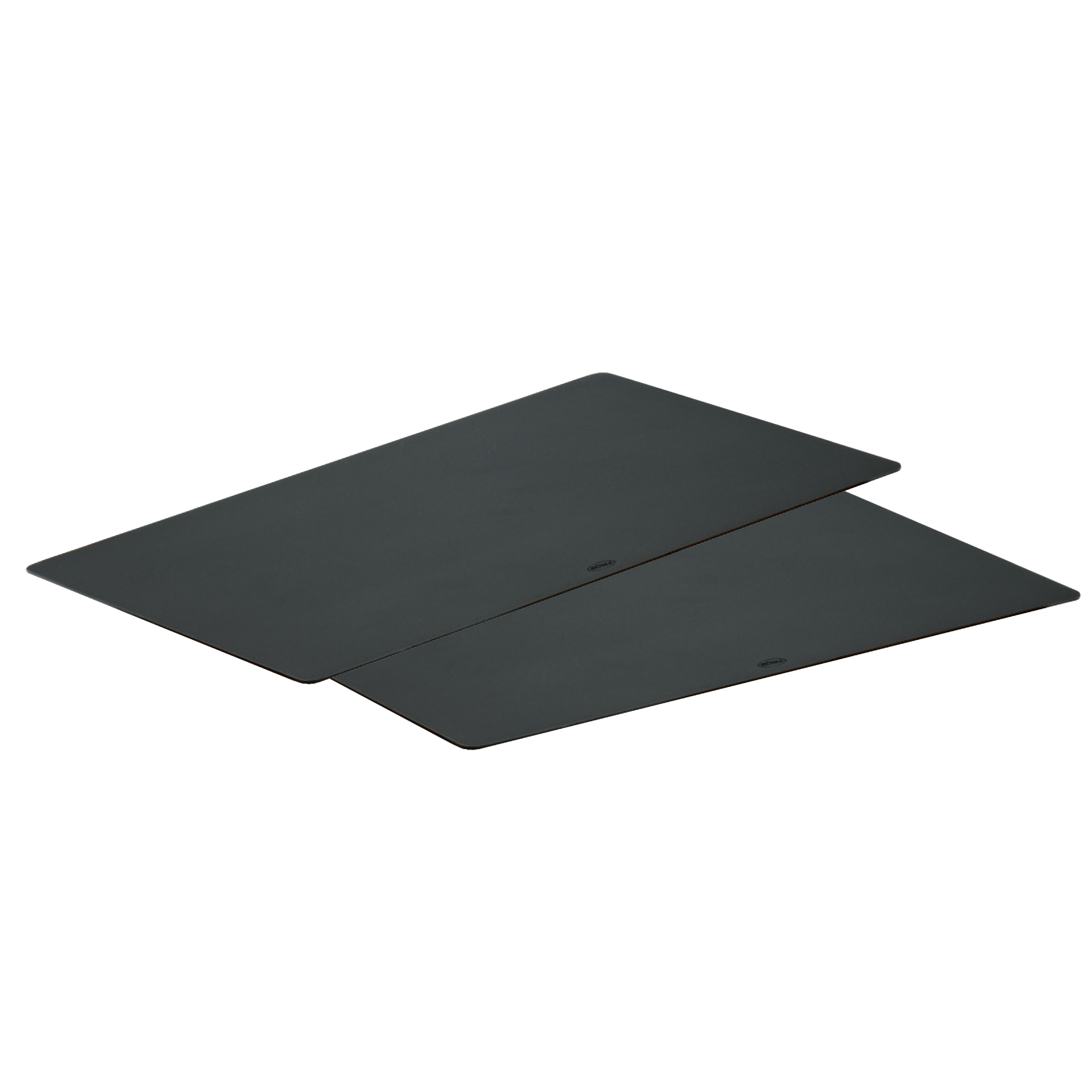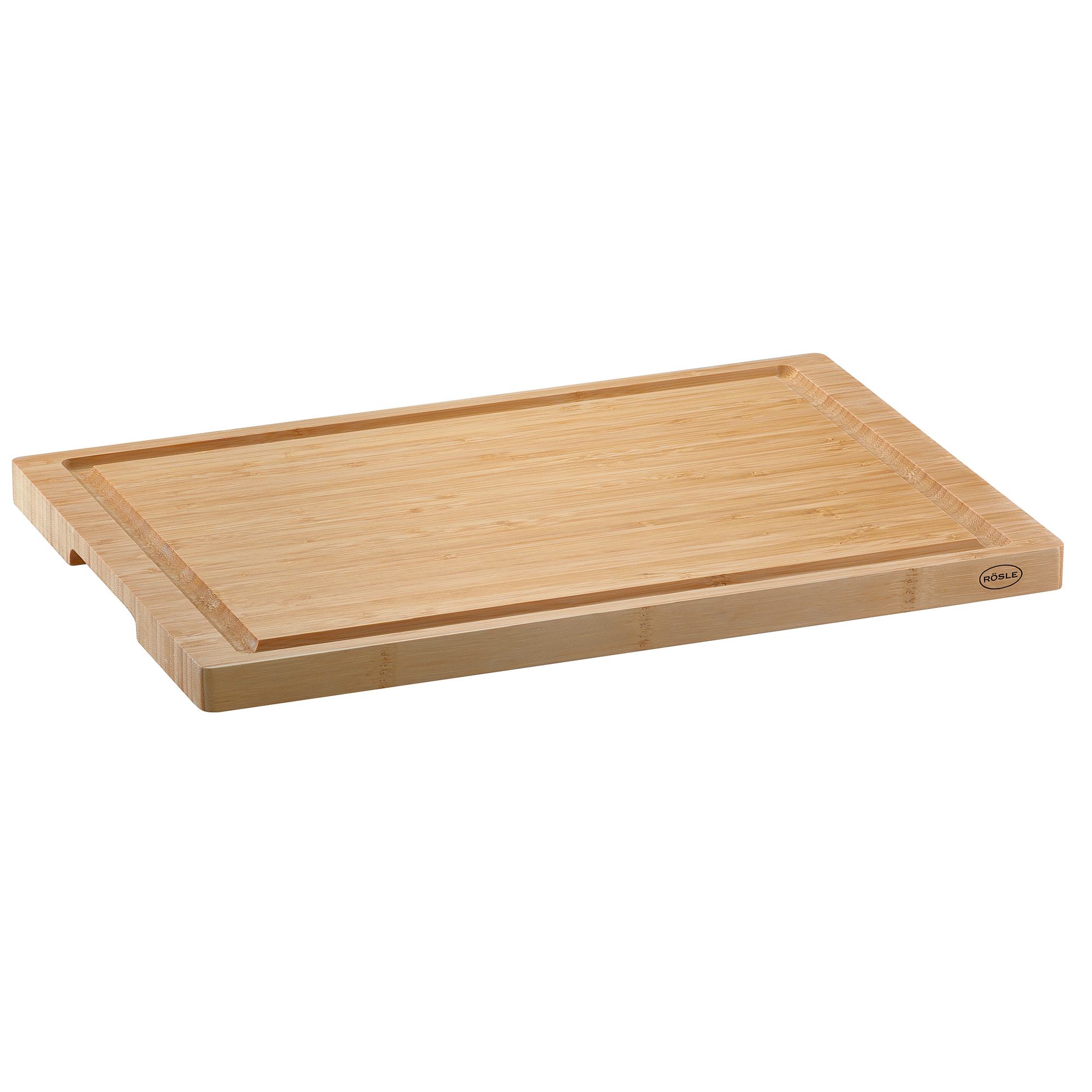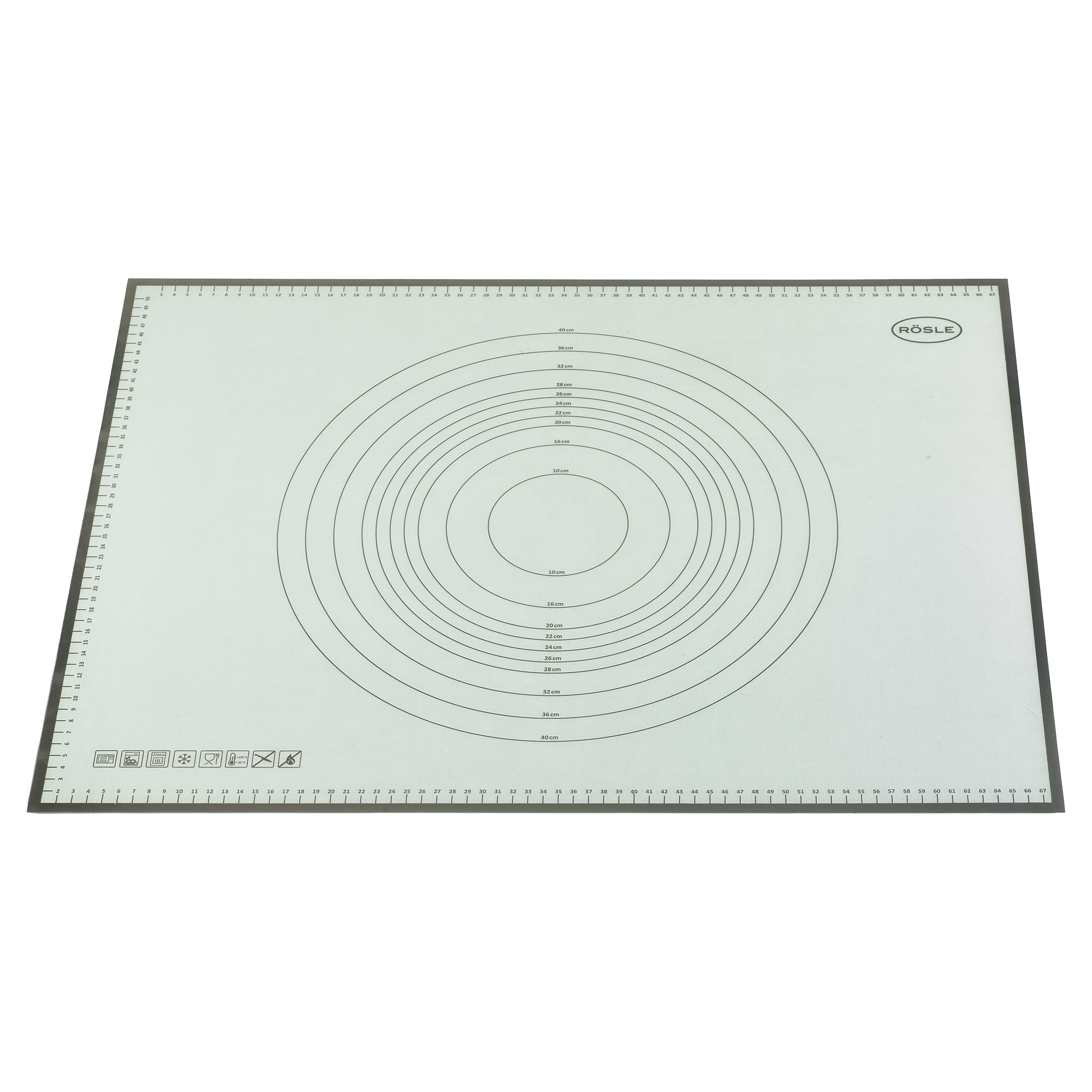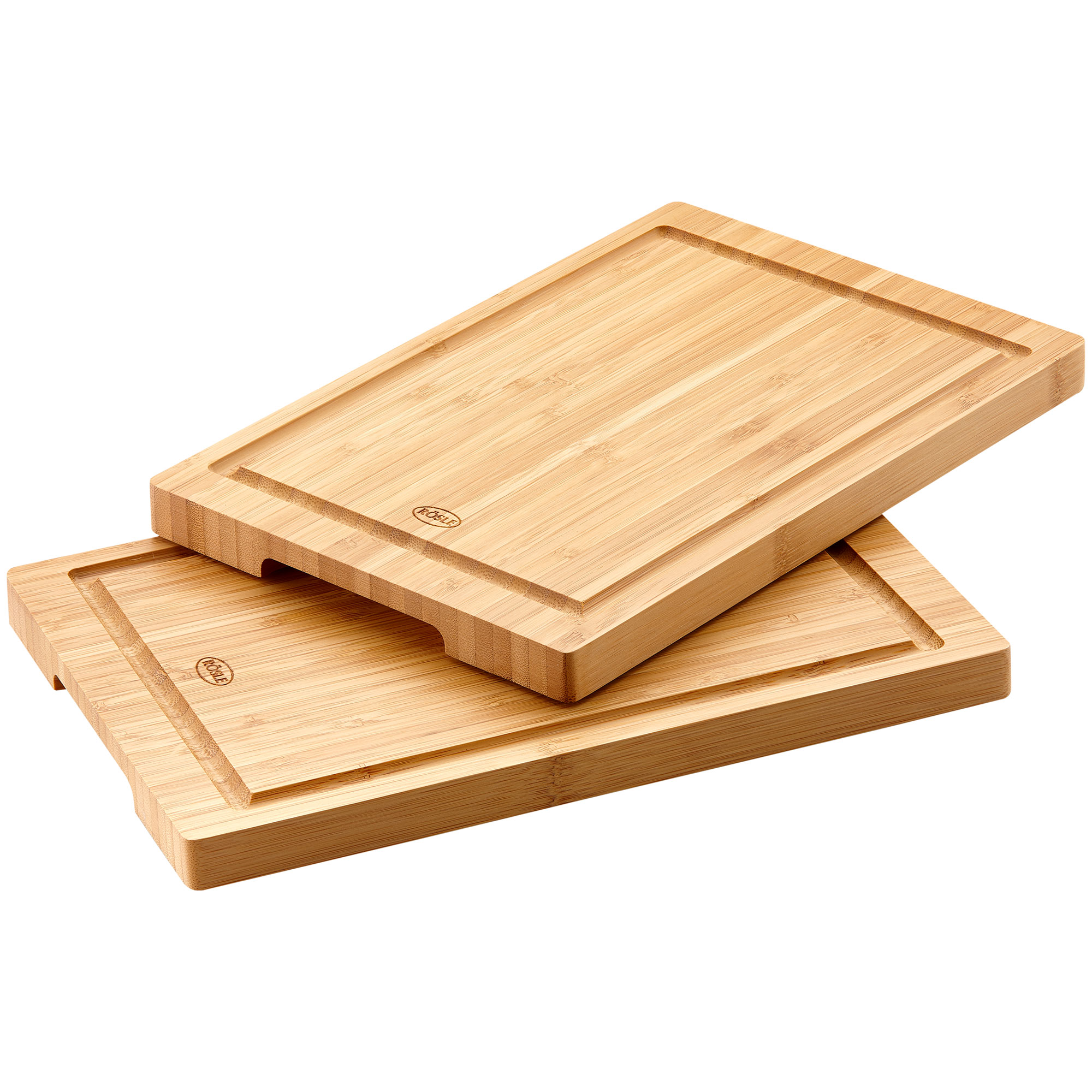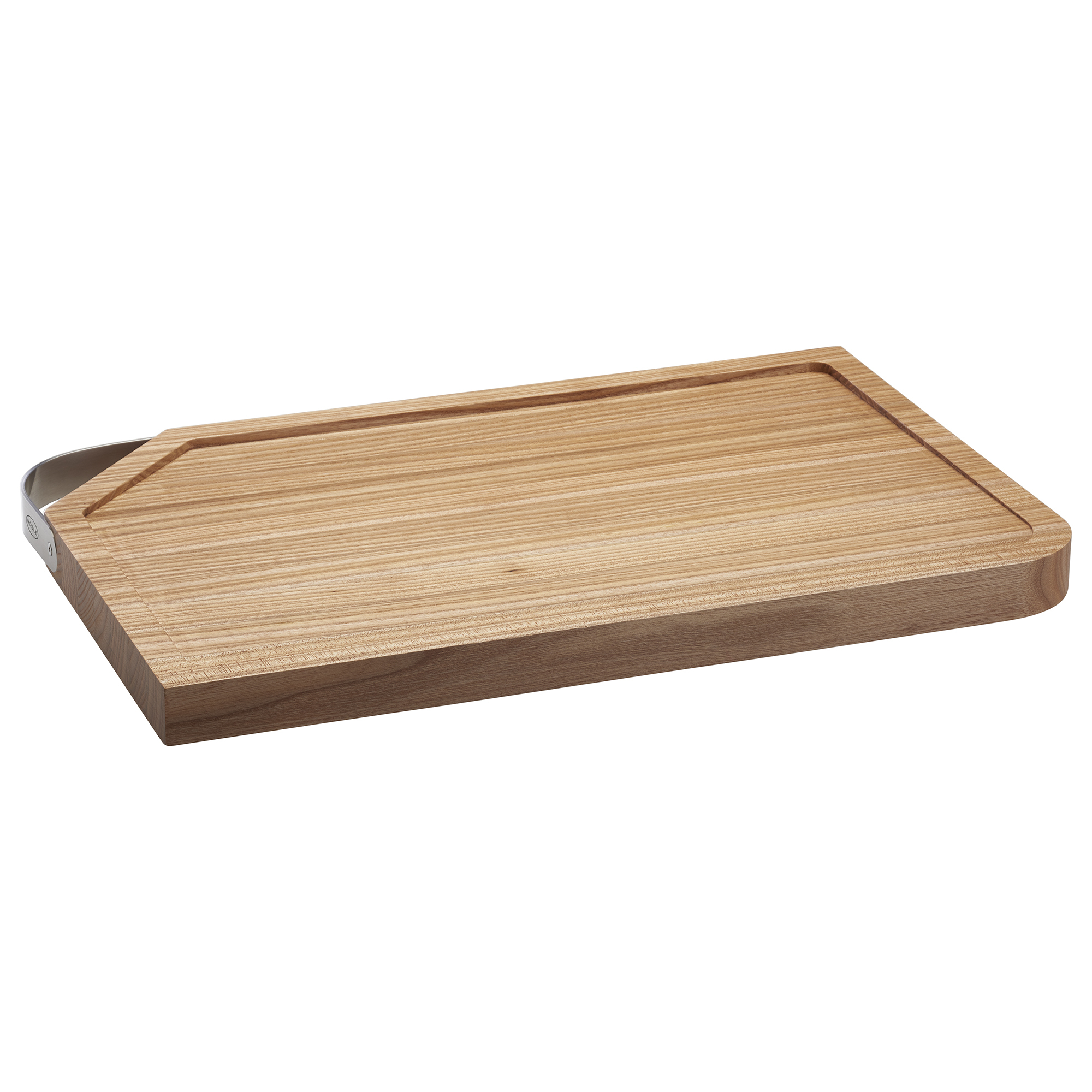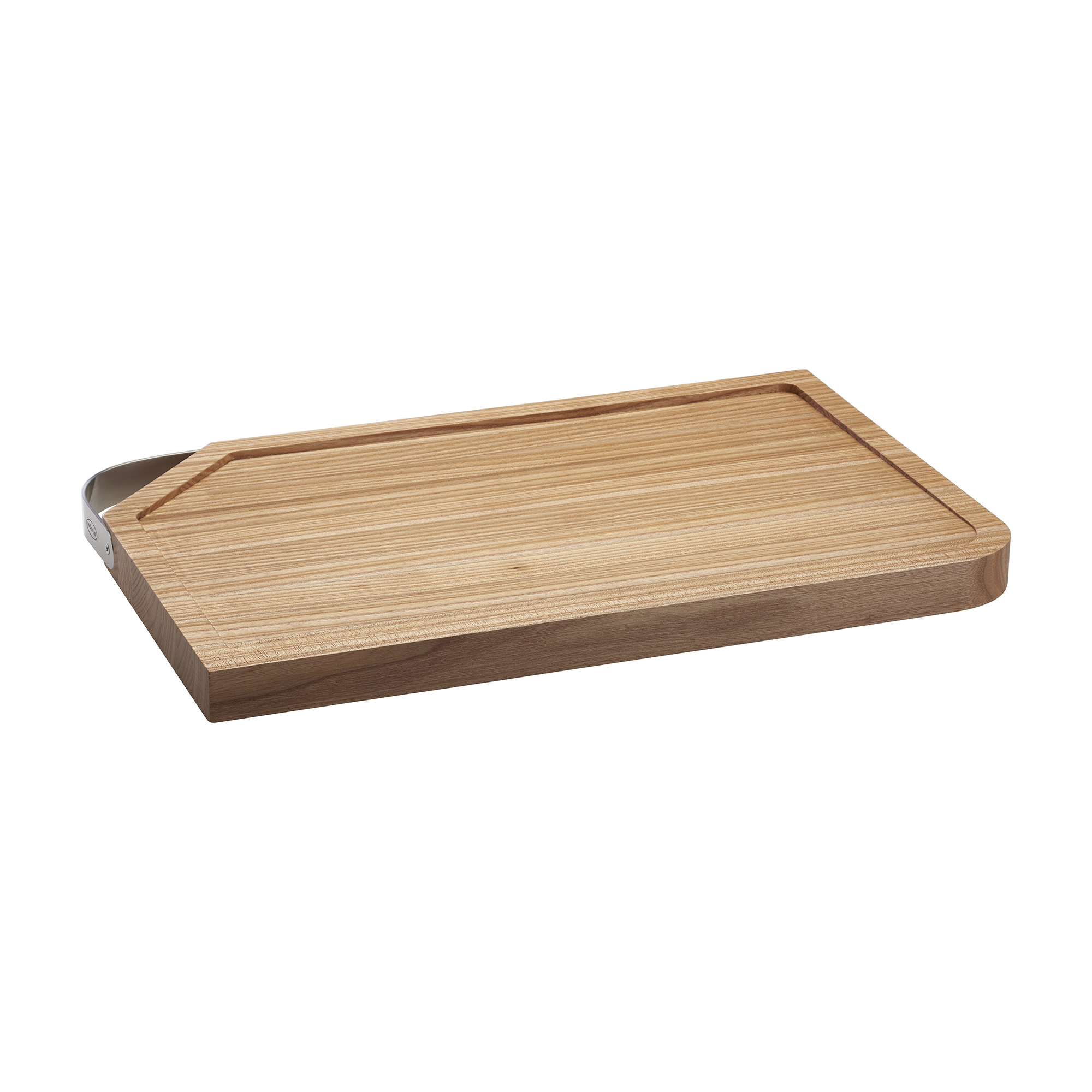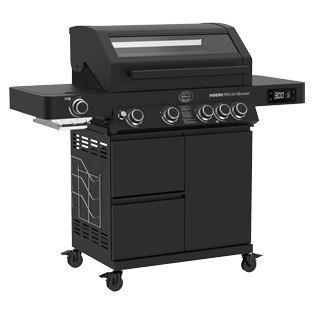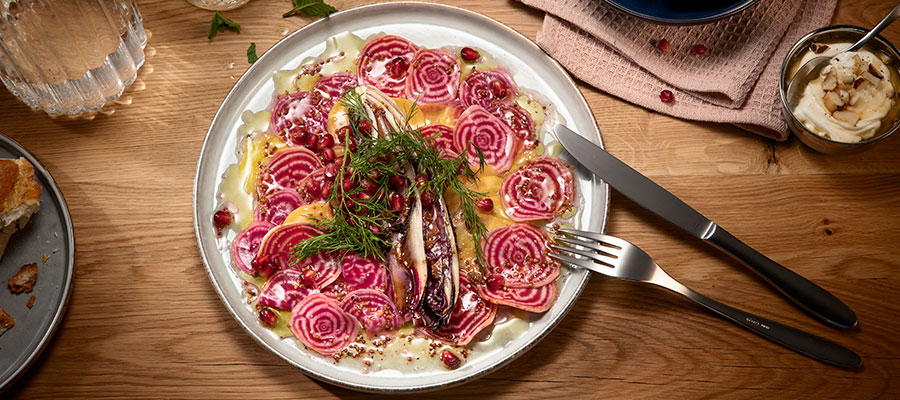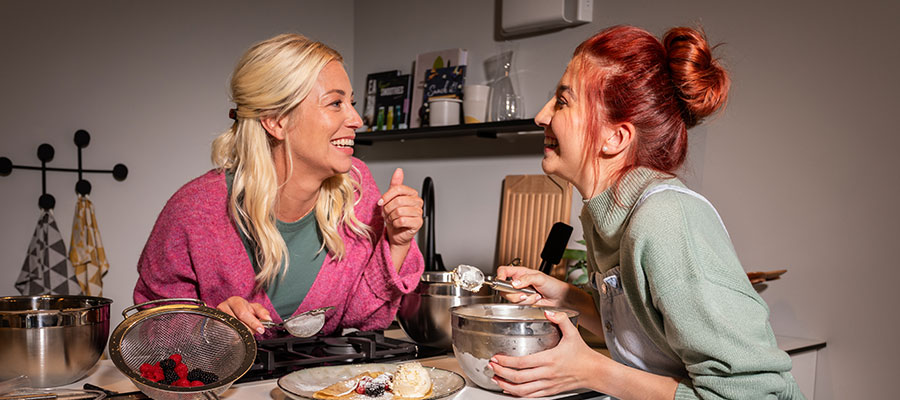Cut, slice and serve safely: Cutting boards from RÖSLE.
Cut, slice and serve safely: Chopping boards from RÖSLE
Chopping boards are indispensable for all work with a knife or slicer in the kitchen. Unlike the breakfast or snack board, the chopping board offers more space for slicing, chopping or planing, so that cauliflower or larger pieces of meat can also be cut up easily on it. A good chopping board not only protects the table from scratches, but also prevents your knives from becoming blunt.
But what are good chopping boards and what are their distinguishing features? What distinguishes chopping boards and which materials are best suited for vegetable boards or meat boards? Read on to find out what you should look out for when choosing high-quality chopping boards.
Why wood and bamboo are ideal materials for chopping boards
Whether you are slicing vegetables, chopping herbs or cutting meat into small portions - a chopping board protects the table and knives and makes it easier for you to work on food with a knife.
Chopping boards are available in different designs and materials. They are sometimes named after the material they are made of, for example as a wooden chopping board, plastic board, ceramic board or bamboo board. Another classification is based on size and shape or the intended use, which is why chopping boards are also known as breakfast boards, kitchen work boards, carving boards or cutting boards.
One of the basic requirements that a good chopping board should meet is that it should be made of a material that is fully recommended for contact with food. It should also be non-slip. Many chopping boards are equipped with small silicone feet or feet. These hold the chopping board in the desired position and at the same time elevate it, making it easier to work with. Chopping boards with feet are also particularly suitable for chopping food.
When choosing a suitable material, various criteria must be weighed up against each other. Plastic chopping boards are usually particularly inexpensive and can be cleaned in the dishwasher. However, one disadvantage is that they wear out quickly and fine particles can end up in the food, as plastic is not highly resistant to cuts. Bacteria can also accumulate in the cuts that occur after a short time and cannot be completely removed in the dishwasher.
In contrast to plastic boards, glass, ceramic or stone boards pass the hardness test, but are known as “knife killers” for precisely this reason, as they do not give way when cutting. As a result, knives are blunted more quickly if you use a hard kitchen work board as a cutting surface.
Wood and bamboo have proven to be ideal materials for chopping boards. Bamboo is extremely robust and a rapidly renewable raw material that also has antibacterial properties. Wood is gentle on knives, can also be sourced from sustainable forestry and contributes not only to the high functionality but also to the excellent appearance of the chopping boards.
Shapes, board thicknesses, intended use: further selection criteria for chopping and serving boards
In addition to the material, other features determine the quality of a chopping board that is also used for slicing or chopping.
In terms of shape, cutting boards are usually rectangular so that already cut components can be pushed to the side. It is ideal if any liquids that escape are collected in a juice groove. However, the ideal chopping board is shaped without edges on one side so that the chopped food can be easily transferred from the board to a pot or pan.
The perfect size of a kitchen chopping board naturally depends on what you want to chop and in what quantities. But even if it's just the parsley you're chopping, the chopping board should offer enough space so that you don't have to keep interrupting your work to put herbs or vegetables you've already cut into a bowl. A vegetable board should therefore be at least 30 cm in length, while a meat board can also be larger.
Cutting boards made of real wood and bamboo are suitable for processing or serving all types of food. They can therefore be used as bacon boards, cheese boards, fish boards, vegetable boards or bread boards. In professional kitchens, several chopping boards are usually used, separated by food type. Alternatively, cutting boards can be used as a supplement, for example to prevent discoloration when cutting beet or other highly staining foods.
To prevent the cutting board from warping in the long term, also pay attention to the board thickness. For vegetable and meat boards, this usually increases in relation to the size and should be at least 2 cm. A good weight of around one kilo or more ensures that the board rests firmly.
If you take care of your wooden or bamboo chopping board by washing it under running water and not in the dishwasher and then leaving it to dry upright, a high-quality kitchen chopping board will prove to be a long-lasting kitchen helper.
Natural materials, high-quality workmanship: RÖSLE chopping boards
Cutting boards from RÖSLE are available in the usual quality as wooden cutting boards or as bamboo cutting boards from the BASIC LINE series. The wooden chopping boards from RÖSLE are made from the best elm wood in board thicknesses of 2.5 or 3 cm and are available in two sizes.
Due to its high density and fine pore grooves, elm wood is an excellent material for making cutting boards that are gentle on knives. And because elm wood also looks great, it is often used to make particularly decorative products. Our kitchen boards made of elm wood are also equipped with a high-quality stainless steel handle, making them ideal for serving cheese platters or other “canapés”.
Another special feature of the elm wood chopping boards from RÖSLE is that the cutting surface slopes in one direction so that liquids or leftover food are collected at the recessed end of the chopping board. The frameless front edge allows vegetables, fruit, herbs or meat and fish to be simply slid into a bowl, pot or pan after cutting.
Bamboo is not a type of wood, but a type of grass. This makes it all the more fascinating what enormous robustness and strength bamboo has as a material, which is why a board thickness of 2 cm with a size of 39 x 26 cm already results in an optimal ratio of surface area and thickness of a bamboo cutting board.
Like our wooden chopping boards, the bamboo boards are also equipped with a juice groove and non-slip feet. Cut-outs on the side of the board make it easy to lift. And if you lose a silicone or rubber foot, you can easily reorder it online.
Wooden or bamboo chopping boards from RÖSLE are made to a high standard and are suitable for the hygienic preparation of all foods. If you would also like to use cutting boards that can be cleaned in the dishwasher, we have sets of cutting boards made of polypropylene (PP) in our range.
Unlike other plastics, PP is manufactured without the addition of plasticizers and is easy to recycle. The cutting surfaces are non-slip and help to ensure that your knives remain sharp even with daily use and that the food can be cut safely and hygienically.

